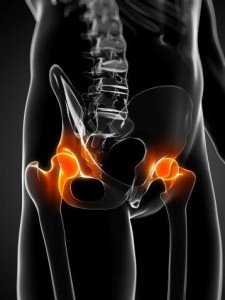FAI is caused by a bony growth abnormality of either the femur (thigh bone) called a CAM, acetabulum (socket) called a pincer or both. These abnormalities often cause an abutment of the hip joint during certain movements, namely flexion and rotation, resulting in a pinching sensation at the hip or pain; most often in the hip flexor and groin region. This pinching type movement can sometimes cause damage to the labrum (O ring type ligament around the joint) and can lead to arthritis later on in life.
How did I end up with some extra bone?
FAI begins to form at early puberty (at around 13 years old) as a response to external stresses placed on the joint during certain sports. It is currently thought that weight bearing sports where you flex and rotate your hip repetitively (such as soccer) cause extra bone to be formed on the edge of the growth plate, creating a bump. This bump continues to grow until you finish puberty
How prevalent is it?
- Played soccer as a kid? Did you train or play more than 3 times a week before you were 12 years old? You are 2.6 times more likely to have FAI then those that trained/played less than that
- Up to 89 precent of athletes undertaking sport that load hip have been shown to have FAI (especially CAM deformities)
Is it just the new craze? Why should we care?
Research suggests there are correlations between FAI and the development of OA. With 1 in 13 people suffering from OA and the rate of hip replacements increasing by 25% in the last 10 years, further research into understanding the progression of FAI and identifying its modifiable risk factors is required.
How can I help?
If you, your friends, family or colleagues are between 18-50 years old, play soccer and experience hip or groin pain you may be eligible to participate in a study investigating FAI and Osteoarthritis. Click here to find out more.
References:
Agricola, R., Heijboer, M. P., Ginai, A. Z., Roels, P., Zadpoor, A. A., Verhaar, J. A. et al. (2014). A cam deformity is gradually acquired during skeletal maturation in adolescent and young male soccer players: a prospective study with minimum 2-year follow-up. Am J Sports Med, 42(4), 798-806.
Agricola, R., & Weinans, H. (2015). What causes cam deformity and femoroacetabular impingement: still too many questions to provide clear answers. Br J Sports Med.
Australian Institute of Health and Welfare. (2016). Osteoarthritis: Authoritative information and statistics to promote better health and wellbeing Retrieved 16th April 2016, from http://www.aihw.gov.au/osteoarthritis/
Diamond, L. E., Dobson, F. L., Bennell, K. L., Wrigley, T. V., Hodges, P. W., & Hinman, R. S. (2015). Physical impairments and activity limitations in people with femoroacetabular impingement: a systematic review. Br J Sports Med, 49(4), 230-242.
Siebenrock, K. A., Ferner, F., Noble, P. C., Santore, R. F., Werlen, S., & Mamisch, T. C. (2011). The cam-type deformity of the proximal femur arises in childhood in response to vigorous sporting activity. Clin Orthop Relat Res, 469(11), 3229-3240.


